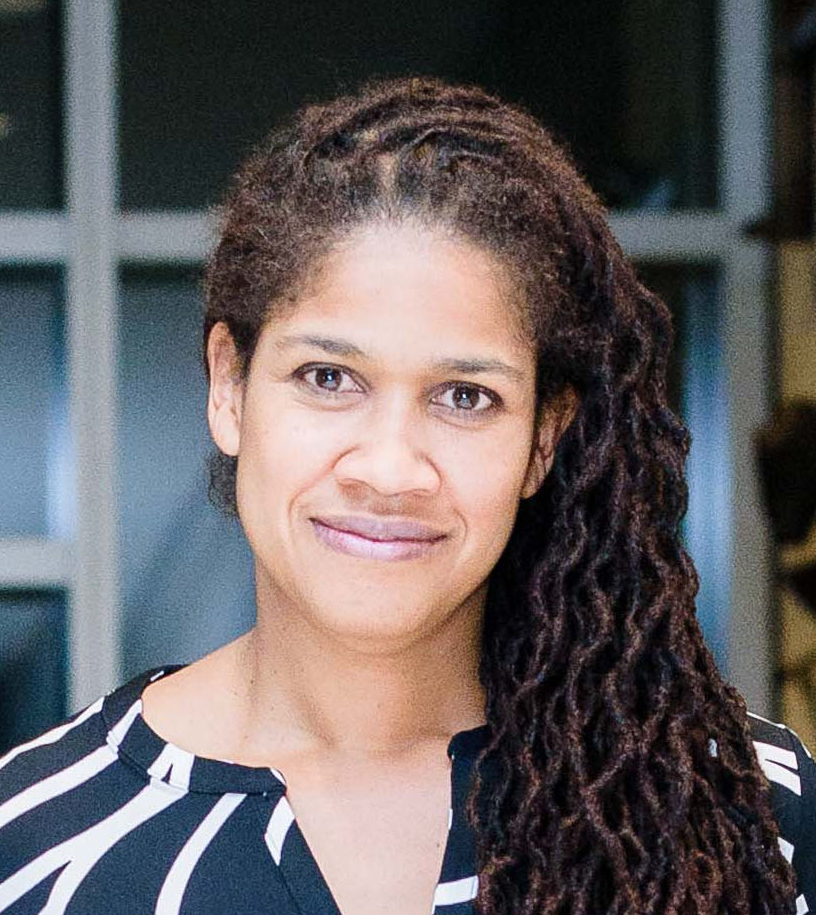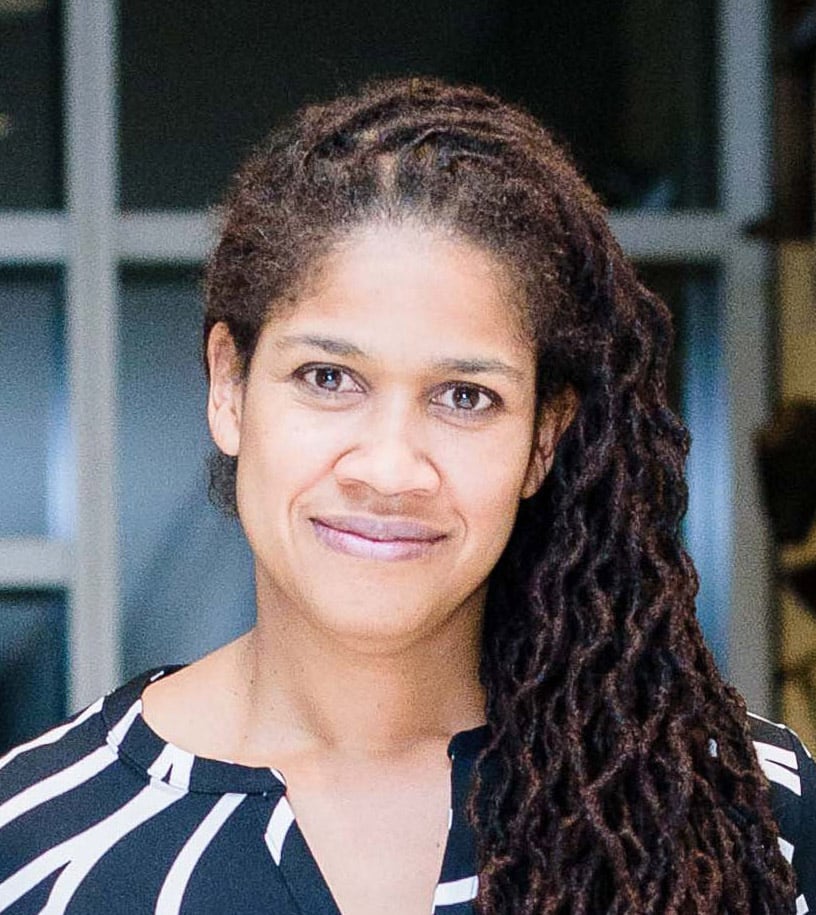
Jacqueline Bishop for The Huffington Post shares: “For art historian Krista Thompson, a region like the Caribbean could do with more people studying art history since there is a booming artistic community and not enough curators and writers to document the work now being produced. “I’d wager that in the future it is the people working in more and more niche communities, some of which have formed in the Caribbean, who will have more opportunities available to them in the field of art history.”

Installation shot of work by Christopher Campbell as seen in ‘En Mas’ at the NAGB, curated by Krista Thompson and Claire Tancons.
Krista Thompson was born and grew up in Nassau, Bahamas, in a small tight-knit community that, at the time, did not even have a national gallery. For high school, Thompson went to Queen’s College, where she reports receiving a “colonial education with a heavy influence on religion from largely British teachers.”
After high school, Thompson went on to do her undergraduate work at McGill University in Canada, majoring in both art history and political science. She chose to study political science in addition to art history after being questioned, time and time again, about what indeed one could do with a degree in art history. Political Science was seen as a more ‘practical’ and applicable subject to study. “But if you think about it,” Thompson went on to explain, “visual expression is often highly charged and consequently highly political. I see art and politics as completely overlapping. Both art and politics are involved in rethinking – and redrawing – boundaries.”
The linkage between the visual arts and politics would become definitive of the growing body of work that Krista Thompson has done and continues to do.
Her initial interest as an art historian was in painting and photography. She remembers searching the stacks of the libraries and archives on the island to get more information on local Bahamian artists and finding next to nothing, particularly so on artists of African descent. At the time, Thompson herself was also a practicing visual artist, and that experience led her to create a series of self-portraits, utilizing African American texts. “Looking back now I realize what I was doing was trying to imagine myself in relation to art history.”
Having chosen to interview Krista Thompson as a burgeoning and path-breaking art historian, I was surprised and delighted to know that she, in fact, had a practice as a visual artist. “I have not practiced art in about a decade,” Thompson shared, “but now I am working on a book project that incorporates art making. When I describe myself, I say that I am primarily an art historian who uses different platforms to convey my work. Curating is one platform. Writing another. Now I am working on a video essay.”

Krista Thompson
At McGill, Krista Thompson wrote a thesis looking at the images of the black female body in European, mainly French art of the late 19th and early 20th centuries. “This was so formative for me,” Thompson said, “allowing me to think about the relationship between the black subject and canonical works.”
Following her time at McGill, Thompson received a prestigious internship at the Metropolitan Museum of Art in New York City where she worked as an assistant for noted curator and art historian Lowery Stokes Sims. At the Metropolitan Museum of Art, Thompson started thinking more in-depth about the notion of ‘the other’. In Henri Rousseau’s work, for example, she started trying to understand the ‘tropicalized’ notions the artist was articulating, despite the fact that Rousseau had never traveled to the places that he was representing. Then she started looking closely at the use of African masks and the various notions of people and places that had been definitive to the formation of modernism.
It was while she was at the Metropolitan that Thompson started thinking about what her place might be in the museum and art historical worlds and decided to get a doctoral degree from Emory University in Atlanta. Doing so allowed her to strengthen her interest within museums and to use curatorial practice to make artworks more accessible to a larger audience. ”I found that as a curator I could explore how issues were framed on the wall, and I could continue exploring the formative relationship between African Diasporic subjects and contemporary and modern art.”
Before long, she was producing such seminal essays as – “A Sidelong Glance: The Practice of African Diaspora and Art History in the United States.” In this essay, she examined why, in 80 percent of the job advertisements published by the College Art Association, over a twenty year period in which the words ‘African diaspora’ appear, they are accompanied by ‘and/or’ — “African diaspora and/or African art history” and, in rarer instances, “African diaspora and/or African American and/or Latin American art history.”
Increasingly in her scholarship, she was paying particular attention to how black subjects could be, and were indeed excluded from art history. Says Thompson, “When John Ruskin wrote about William Turner’s representation of a slave ship, the black subject disappears completely in his writing, except as a footnote. I started looking at how black subjects are rendered invisible and I started bringing a critical eye to what is confined to the footnotes of art history. I am constantly looking at what is seen and unseen. I am always asking questions about object-hood versus subject-hood. When I talk about this relationship between art history and the African Diaspora, my hope is to push methodologies; to cross and blur boundaries; to look more explicitly; to look for what is and is not obvious.”
These interests would be fully developed in her first book, “An Eye For The Tropics: Photography, Tourism, and Framing The Caribbean Picturesque,” a work that is based, in part, on postcards of the Caribbean islands of Jamaica and the Bahamas. For this work, Thompson was trying to get at the heart of what she calls a ‘visual lexicon’ of the Caribbean. How the project came about, she explained, is that research she was doing on tourism, led her to look at how “tourism promoters, backed by British colonial administrators, began to market Jamaica and the Bahamas as picturesque ‘tropical’ paradises. That first book sought to plot the types of images that photographers used to advance the tourism industry in Jamaica and the Bahamas.”
One scholarly project would give rise to another.
Her second book, “Developing Blackness: Studio Photographs of “Over the Hill” Nassau in the Independence Era”, told the story a black Bahamian community’s growth and their descendants ascendancy into the leadership of Bahamian society. This book tackled the ways in which black photographic archives were kept and the stories that these archives told.
“Developing Blackness”, in turn, led to “Shine”, a book in which Thompson is examining the ways that images of ‘light’, ‘video-light’ and such terms as ‘shimmer and shine’ have come to be circulated in African diasporic communities. The argument being made in the book is that “performing for the camera is more important than the final image itself. For the members of these African diasporic communities, seeking out the camera’s light — whether from a cell phone, Polaroid, or video camera — provides a means with which to represent themselves in the public sphere.”
Thompson’s most recent project, “En Mas’: Carnival and Performance Art in the Caribbean”, is an exhibition co-edited and co-curated with Claire Tancons and organized and presented by the Contemporary Arts Center, New Orleans. It is co-organized as a traveling exhibition by Independent Curators International, New York and seeks to come to terms with how people are using public spaces and a vernacular art form to gain visibility. “There are different ways of thinking about politics,” Thompson maintains. “Junkanoo and Carnival are a rejection of conventional mores. These expressions are about claiming one’s space. Carnival and Junkanoo are not only a question of aesthetics but rather about the politics that surround the artistic practice of people of African descent.”
For more information, see here.